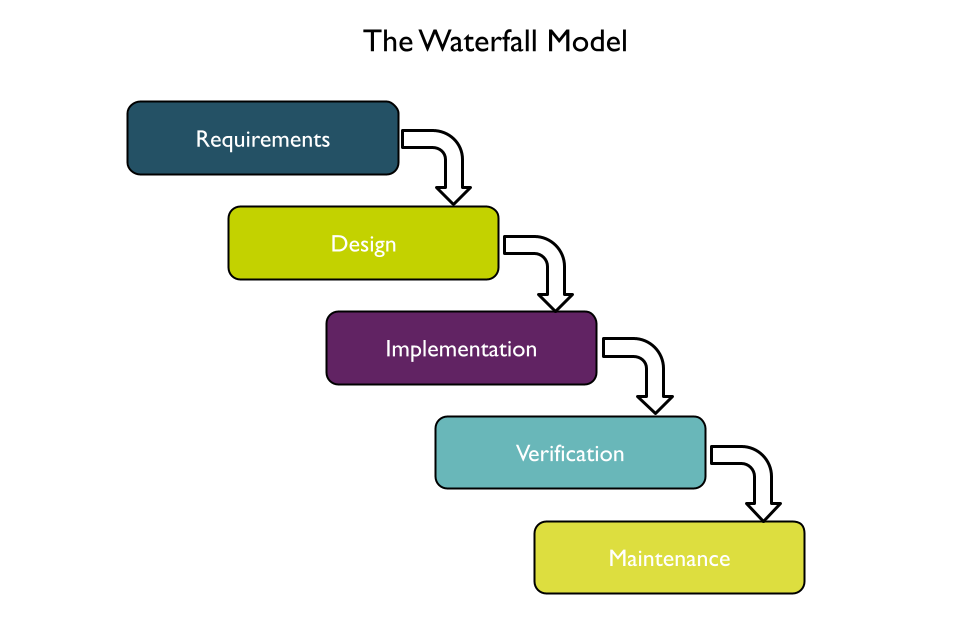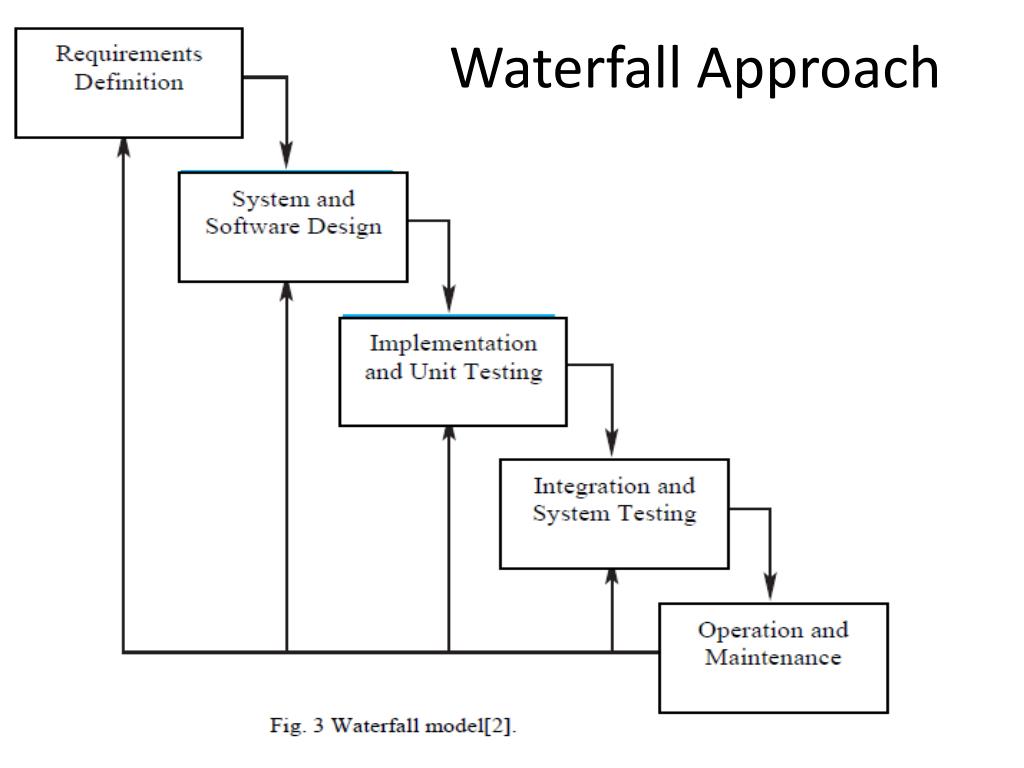
Assess model: Generally, multiple models are competing against each other, and the data scientist needs to interpret the model results based on domain knowledge, the pre-defined success criteria, and the test design.Īlthough the CRISP-DM Guide suggests to “iterate model building and assessment until you strongly believe that you have found the best model(s)”, in practice teams should continue iterating until they find a “good enough” model, proceed through the CRISP-DM lifecycle, then further improve the model in future iterations.
Waterfall approach code#
Build model: As glamorous as this might sound, this might just be executing a few lines of code like “reg = LinearRegression().fit(X, y)”.Generate test design: Pending your modeling approach, you might need to split the data into training, test, and validation sets.



Collect initial data: Acquire the necessary data and (if necessary) load it into your analysis tool.Adding to the foundation of Business Understanding, it drives the focus to identify, collect, and analyze the data sets that can help you accomplish the project goals. While many teams hurry through this phase, establishing a strong business understanding is like building the foundation of a house – absolutely essential. Produce project plan: Select technologies and tools and define detailed plans for each project phase.Determine data mining goals: In addition to defining the business objectives, you should also define what success looks like from a technical data mining perspective.Assess situation: Determine resources availability, project requirements, assess risks and contingencies, and conduct a cost-benefit analysis.Determine business objectives: You should first “thoroughly understand, from a business perspective, what the customer really wants to accomplish.” ( CRISP-DM Guide) and then define business success criteria.Aside from the third task, the three other tasks in this phase are foundational project management activities that are universal to most projects: The Business Understanding phase focuses on understanding the objectives and requirements of the project. Data mining projects are no exception and CRISP-DM recognizes this. Business UnderstandingĪny good project starts with a deep understanding of the customer’s needs. Published in 1999 to standardize data mining processes across industries, it has since become the most common methodology for data mining, analytics, and data science projects.ĭata science teams that combine a loose implementation of CRISP-DM with overarching team-based agile project management approaches will likely see the best results. Deployment – How do stakeholders access the results?.Evaluation – Which model best meets the business objectives?.Modeling – What modeling techniques should we apply?.Data preparation – How do we organize the data for modeling?.



 0 kommentar(er)
0 kommentar(er)
